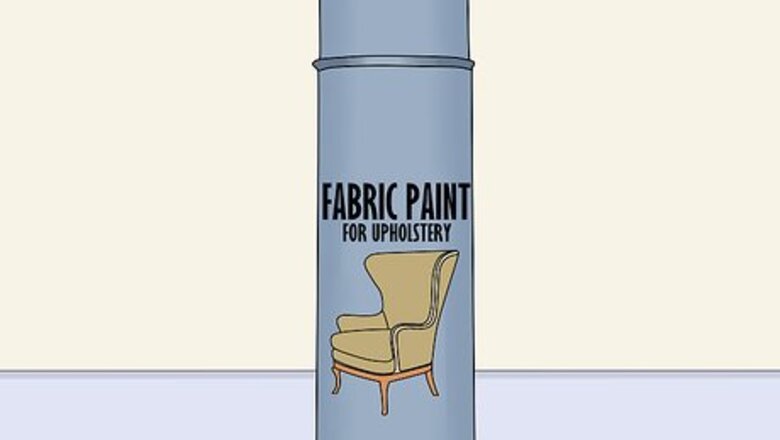
views
- Vacuum your carpet to remove dirt and grime. Protect your walls with newspaper, and wear a face mask to keep yourself safe.
- Use a spray-on upholstery paint to paint your carpet. Start by spraying the edges, then work in toward the center in even strokes.
- Use a stencil or painter's tape to paint designs. Erase any mistakes with paint thinner.
Setting Up Your Workspace
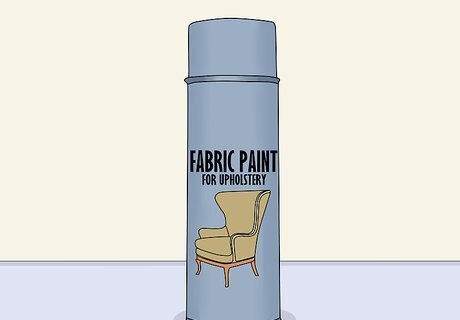
Use spray-on upholstery paint to keep the carpet soft. Avoid acrylic or oil-based paints because these will leave your carpet feeling crunchy and clumpy. While you could use a paintbrush to apply canned upholstery paint, you won’t achieve the same coverage consistency as you would using spray paint. Choose a color that complements the walls or furniture in the room. For example, use blue spray paint to complement light brown walls or opt for a classic maroon paint to provide contrast for blue, black, or white walls and furniture. Note that using a light-colored paint on a dark carpet won’t give you the intended result. For instance, white paint on a black carpet might turn out looking gray. Bright, vivid colors work best on white carpets. If your carpet is tan or taupe with yellow undertones and you’re using a light-colored paint, those yellow undertones will come through and give you a different result than on the can. You may have to do several coats to achieve the color closest to the can, so buy extra cans if that’s the case. Existing patterns on the carpet may still show if they’re a darker color than the paint you’re using. If that’s the case, be prepared to do extra coats, accept the design shadows showing through, or cover them with furniture.
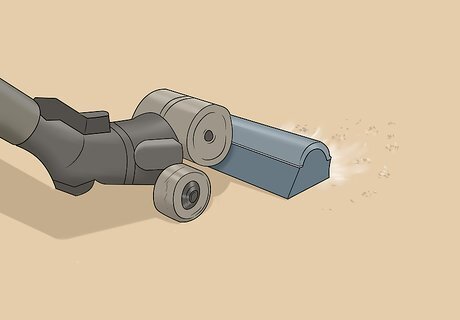
Vacuum or shake out the carpet or rug to remove dirt and debris. Clean your carpet prior to painting it so you don’t have odd lumps or debris distorting your design. Be sure to get out as much pet hair and crumbs as possible! Use a mixture made of equal parts of white vinegar and water to spot treat dried or lumpy stains.
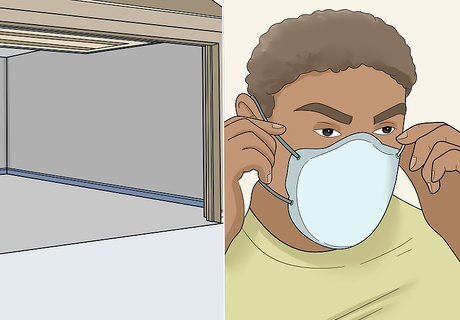
Choose a well-ventilated area to apply the paint and wear a mask. If possible, move the carpet outside or to a well-ventilated area like an open garage or porch. If you can’t move the carpet, open doors and windows or turn on some fans to get some air flow. You’ll also want to wear a nose and mouth mask to avoid inhaling fumes. If you don’t have a face mask, tie a bandana or thin cloth around the lower half of your face.

Protect surrounding walls and furniture with tape and newspaper. If you’re painting inside, line the area around the carpet with painter’s tape. Make sure the tape covers an area 12 inches (30 cm) to 24 inches (61 cm) around the area where you’re applying paint. Use newspaper, old bed sheets, or plastic covers to protect other nearby surfaces in the room. If you’re using fans, note which way the draft is flowing so you can protect those areas from small specks of airborne paint.
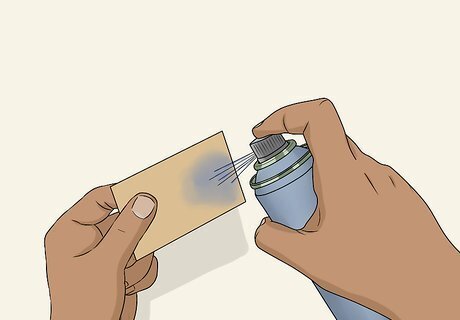
Test the spray paint on a piece of scrap cardboard. Shake the can for 30 to 60 seconds and apply a steady stream of paint to a piece of cardboard. Make sure the paint comes out evenly and that the trigger is easy to push down. If the trigger is clogged, twist it off of the top of the can and let it soak in paint thinner for 2 to 3 hours. Then, wash it under cool water, dry it off, reattach it, and test it again.
Solid Color
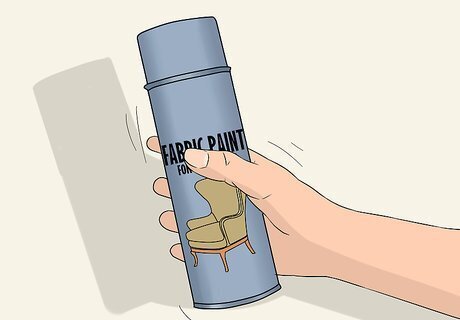
Shake the can for 30 seconds to 1 minute before removing the cap. Keep the cap on the can and shake it for 30 seconds to 1 minute or however long the instructions say to do so. Then, remove the cap and prepare to paint!
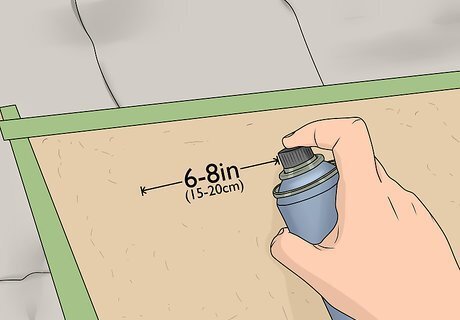
Hold the can 6 inches (15 cm) to 8 inches (20 cm) away from the carpet. Hold the can at a distance that allows you a good range of coverage. Holding it closer sprays a smaller area and results in thicker paint while holding it farther reaches a larger area with thinner paint. Refer to the instructions on the can to see the recommended spraying distance for that particular product.

Start by spraying the edges of the carpet first. Spray the edges of the carpet first and work your way from one end to the other. This will help you keep track of how many coats you’ve sprayed and give you a dry, unpainted place to stand while you’re spraying a section of the carpet. Avoid spraying yourself into a corner. Always make sure you have a dry, unpainted walkway where you can stand. If the first pass is too light, repeat the step until you're satisfied with the coverage.
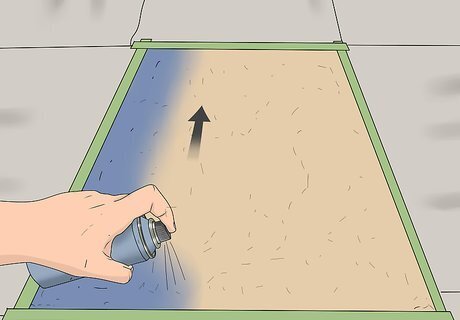
Spray the paint in long, even strokes. Spray the paint from the same distance on each stroke to make the paint go on evenly. Spray in lines so you can keep track of how many coats you’ve put on. Avoid spraying the paint on in varying shapes or squiggles because doing so will cause unevenness. If the carpet covers the entire floor of a room, start with the sides that run along the wall so you have a walkway in the middle. You’ll need to wait 12 to 24 hours for the paint around the edges to dry before you stand on that area to paint the center walkway.

Work from one end of the carpet to the other end. Make sure you are fully satisfied with the section you are painting before moving forward. This is important so the final color of the rug is consistent. Also, it will save you the trouble of having to add another coat to certain areas later on.

Test the rug for dryness after 8 to 10 hours. Poke a small, inconspicuous corner of the rug with your finger and see if any paint comes off. If you don’t see any paint on your finger but the carpet feels wet, avoid walking on it or placing furniture on it. If you live in an area with high humidity, you might want to wait a full 24 hours before walking on the carpet. Some manufacturers recommend waiting 72 hours for the paint to dry before walking on it or letting it come in contact with other surfaces, so check the instructions on the can.

Add more coats or make touch-ups for even coverage. If you’re not satisfied with the intensity of the new color or if you notice splotches or inconsistencies, add a final coat of paint to fix these issues. Be very precise with your spraying strokes to avoid some sections being too thick or more vibrant than others. Take note of where you make touch-ups to avoid accidentally stepping on wet paint!
Designs
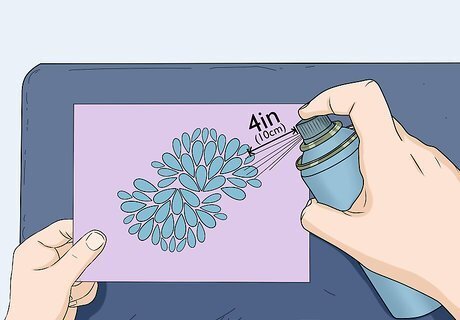
Use a stencil to create curved, intricate designs. First, map out where you want the stenciled designs to go. Use a light-colored washable marker to make small marks so you know where to place the stencil each time. Place one hand firmly on the stencil to make sure it doesn’t move and hold the can about 4 inches (10 cm) away from the carpet to spray in the design. Purchase pre-made stencils from craft stores or make your own out of cardboard or thin plastic materials. It’s best to use just one stenciled design, but you can combine two different stencils if you lay them out in a thoughtful way. For instance, stick to a single celtic design to be spaced out evenly across the center of the carpet or around the edges. You can also use different floral stencils for a smart, unique look.

Lay down painter’s tape in geometric patterns for a modern look. Use painter’s tape to act as a stencil. Lay it out in stripes, chevron patterns, triangles, or any other geometric shape you enjoy. Then, spray the areas around the tape, let the paint dry for 1 to 2 hours, and peel back the tape. Try cutting the tape into small squares and triangles and sticking them to the carpet to create your own geometric patterns. It may help to use a measuring tape to map out where you want to place the painter’s tape for a symmetrical design.
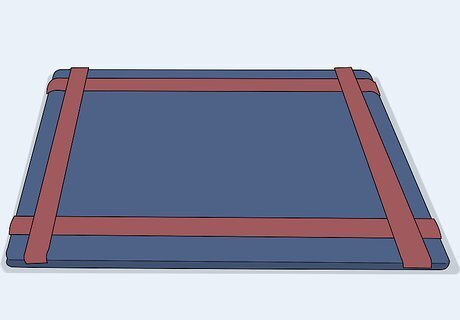
Apply stripes of painter’s tape around the edges of the carpet to make a border. Create a classic border of stripes around the edges of the carpet with lines of painter’s tape. Use a measuring tape to measure out where you want the border lines to go, then make small tick marks with a light-colored washable marker. Lay the tape according to the tick marks. The areas covered by tape will reveal the current color of the carpet. Hold up a piece of cardboard at a 45-degree angle next to the tape line to protect the inside section of the carpet from the paint.
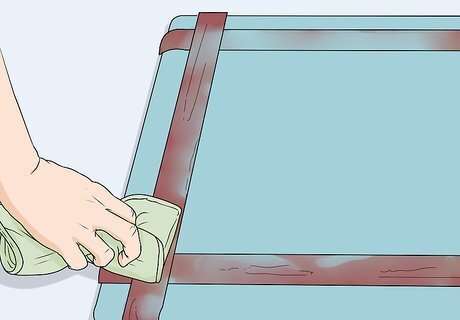
Use a rag to remove any puddled paint on the tape or stencils. Blot the painter’s tape or stencil with a rag to soak up any puddles of paint that may have collected on them. That way, when you peel away the tape or lift the stencil, the puddle won’t drip onto the carpet and ruin your design. Pull up the tape or remove the stencil only after you’re finished painting that area.
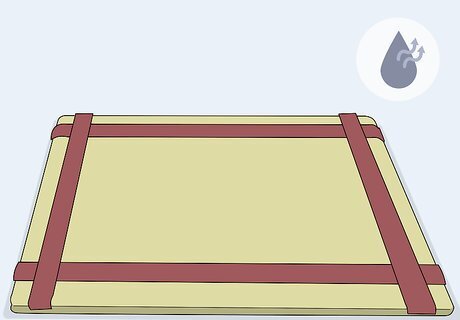
Allow the paint to dry before adding a new color or more tape for the design. Touch the painted area with your finger to make sure it’s dry before moving on with a new color or before laying down more painter’s tape. If your design requires adding more tape to previously painted areas, wait until those areas are completely dry. For instance, if you spray red spray paint over blue paint that isn’t dry, you could end up with purple areas. Placing tape onto still-damp painted areas will compromise the consistency of the paint and, as a result, mess up your design.
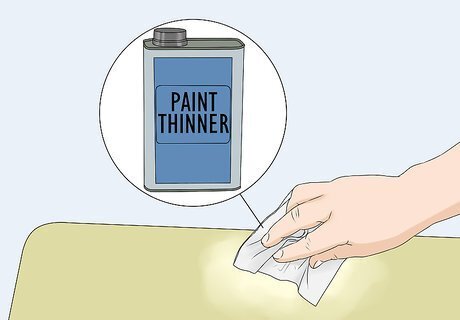
Use paint thinner to clean up your design or erase mistakes. Use a paper towel to wipe up as much of the excess paint as possible, then douse a cloth with paint thinner and blot or rub the affected area until you don’t see any traces of color. Mineral spirits or acetone can also be used to remove paint.

Wait 8 to 10 hours until the rug is completely dry before walking on it. Avoid stepping on the painted areas of the carpet for the next 8 to 10 hours or until it’s completely dry. Depending on the climate and humidity of the area you live in, this could take up to 12 or even 24 hours.




















Comments
0 comment